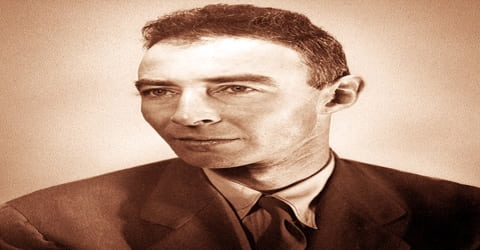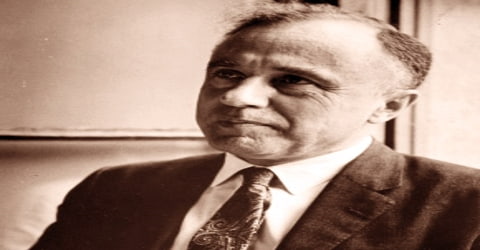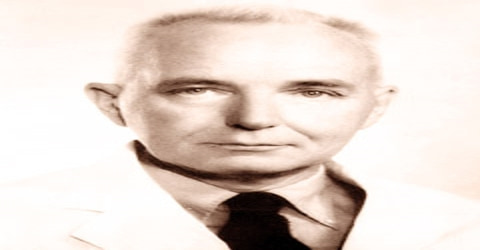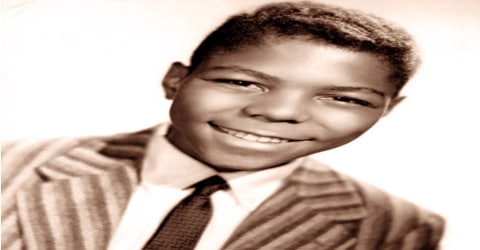Biography of J. Robert Oppenheimer
J. Robert Oppenheimer – American theoretical physicist.
Name: Julius Robert Oppenheimer
Date of Birth: April 22, 1904
Place of Birth: New York, New York, United States
Date of Death: February 18, 1967 (aged 62)
Place of Death: Princeton, New Jersey, United States
Occupation: Physicist
Father: Julius Oppenheimer
Mother: Ella Friedman
Spouse/Ex: Katherine Puening Harrison (m. 1940-1967)
Children: Katherine Oppenheimer, Peter Oppenheimer
Early Life
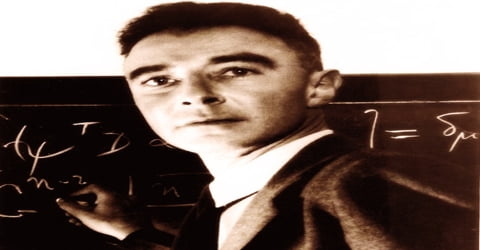
An American theoretical physicist and science administrator, noted as director of the Los Alamos Laboratory (1943-45) during development of the atomic bomb and as director of the Institute for Advanced Study, Princeton (1947-66), J. Robert Oppenheimer was born in New York City on April 22, 1904, to Julius Oppenheimer, a wealthy Jewish textile importer who had immigrated to the United States from Germany in 1888, and Ella Friedman, a painter. He also is known as “the father of the atomic bomb” was an American nuclear physicist and director of the Los Alamos Laboratory (Manhattan Project). Accusations of disloyalty led to a government hearing that resulted in the loss of his security clearance and of his position as adviser to the highest echelons of the U.S. government. The case became a cause célèbre in the world of science because of its implications concerning political and moral issues relating to the role of scientists in government.
The first atomic bomb was successfully detonated on July 16, 1945, in the Trinity test in New Mexico. Oppenheimer later remarked that it brought to mind words from the Bhagavad Gita: “Now I am become Death, the destroyer of worlds.” In August 1945, the weapons were used in the atomic bombings of Hiroshima and Nagasaki, which resulted in Japan’s unconditional surrender.
Oppenheimer’s significant contributions in the field of science include the ‘’Born-Oppenheimer approximation’, the invention of nuclear weapons and his studies on electrons and positrons. From his childhood days, he was a highly talented boy and completed schooling in a very short span of time. Despite this, he entered Harvard a year late, at the age of eighteen, owing to ill-health from colitis. As a man of perseverance, Oppenheimer was keen on making up for his lost years by taking six courses in each term at college, thus utilizing his time to the maximum. He was a member of the Phi Beta Kappa fraternity, where he was inspired by Percy Bridgman’s teachings on thermodynamics which proved to be a turning point in his career. He was the first physicist to point out the existence of black holes but unfortunately, he did not have the patience to validate his theory. Luis Alvarez, a Nobel Prize physicist had mentioned that Oppenheimer would have won a Nobel Prize for his work on black holes and neutrons, had he survived and if he had the patience to substantiate his theory with an experiment. A three-time nominee of the Nobel Prize, he supported Leftist Communities in the political arena and was also fond of the Sanskrit language.
Childhood, Family and Educational Life

J. Robert Oppenheimer, in full Julius Robert Oppenheimer, was born on April 22, 1904, in New York City, New York, the U.S. to Julius Oppenheimer, a rich textile importer and Ella Friedman, a painter by profession. His parents were German-Jews who had immigrated to America in 1888.
Oppenheimer studied at Alcuin Preparatory School initially and in 1911, he enrolled at the Ethical Culture Society School. It was here he completed his schooling in a short span of time and took a great deal of interest in the subject of ‘mineralogy’.
Oppenheimer became one of the brightest students at Harvard University at a youthful age of seventeen. He also attended Cambridge University in England for higher studies, where Ernest Rutherford, the famous British chemist, and physicist, was his teacher. Oppenheimer acquired his Ph.D. from the University of Göttingen in Germany, studying under Max Born.
During his time at the university, Oppenheimer published over a dozen papers on physics and also made novel contributions in the field of quantum mechanics. His thesis paper based on the ‘Born-Oppenheimer Approximation’ became a notable dissertation in the study of molecules. He finally graduated with a Doctor of Philosophy degree, in 1927.
Personal Life
J. Robert Oppenheimer’s mother died in 1931, and he became closer to his father who, although still living in New York, became a frequent visitor in California. When his father died in 1937 leaving $392,602 to be divided between Oppenheimer and his brother Frank, Oppenheimer immediately wrote out a will that left his estate to the University of California to be used for graduate scholarships. Like many young intellectuals in the 1930s, he supported social reforms that were later alleged to be communist ideas.
At Berkeley, Oppenheimer had an affair with Jean Tatlock, a student from Stanford University School of Medicine and the daughter of a literature professor at Berkeley, in 1936. He met Katherine Puening Harrison, a biologist at Berkeley who had been married thrice earlier. Oppenheimer married her on November 1, 1940, and the couple had two children named Peter and Katherine.
During his marriage, Oppenheimer continued his affair with Jean Tatlock. Later their continued contact became an issue in his security clearance hearings because of Tatlock’s Communist associations. Many of Oppenheimer’s closest associates were active in the Communist Party in the 1930s or 1940s. They included his brother Frank, Frank’s wife Jackie, Kitty, Jean Tatlock, his landlady Mary Ellen Washburn, and several of his graduate students at Berkeley.
Career and Works

After graduating in 1925, J. Robert Oppenheimer sailed for England to do research at the Cavendish Laboratory at the University of Cambridge, which, under the leadership of Lord Ernest Rutherford, had an international reputation for its pioneering studies on atomic structure. At the Cavendish, Oppenheimer had the opportunity to collaborate with the British scientific community in its efforts to advance the cause of atomic research. Max Born invited Oppenheimer to the University of Göttingen, where he met other prominent physicists, such as Niels Bohr and P.A.M. Dirac, and where, in 1927, he received his doctorate. After short visits at science centers in Leiden and Zürich, he returned to the United States to teach physics at the University of California at Berkeley and the California Institute of Technology.
In 1928, Oppenheimer gave lectures at the University of Leiden and then traveled to Zurich to work with his friend, Wolfgang Pauli, on quantum mechanics and the continuous spectrum. He accepted the associate professorship at the University of California, Berkeley in 1929 and served this position for the next twenty years.
In 1929, Oppenheimer topped in all the units at the University of California and the California Institute of Technology. Most of the times, Oppenheimer had almost no time for his personal life. The growing popularity of Nazism in Germany during the 1930s, however, became a major event in his life, as it led him towards politics and resistance against the European fascist movement. Apart from being a physicist, he started taking an active part in politics in the year 1934. He began donating a part of his salary to help German physicists escape from Nazi Germany and also began supporting social reforms, which were branded as ‘communist efforts’ later on.
As early as 1930, Oppenheimer wrote a paper that essentially predicted the existence of the positron. This was after a paper by Paul Dirac proposed that electrons could have both a positive charge and negative energy. Dirac’s paper introduced an equation, known as the Dirac equation, which unified quantum mechanics, special relativity and the then-new concept of electron spin, to explain the Zeeman effect. Oppenheimer, drawing on the body of experimental evidence, rejected the idea that the predicted positively charged electrons were protons. He argued that they would have to have the same mass as an electron, whereas experiments showed that protons were much heavier than electrons. Two years later, Carl David Anderson discovered the positron, for which he received the 1936 Nobel Prize in Physics.
The rise of Adolf Hitler in Germany stirred his first interest in politics. In 1936 Oppenheimer sided with the Republic during the Civil War in Spain, where he became acquainted with Communist students. Although his father’s death in 1937 left Oppenheimer a fortune that allowed him to subsidize anti-Fascist organizations, the tragic suffering inflicted by Joseph Stalin on Russian scientists led him to withdraw his associations with the Communist Party in fact, he never joined the party and at the same time reinforced in him a liberal democratic philosophy.
In the late 1930s, Oppenheimer became interested in astrophysics, most likely through his friendship with Richard Tolman, resulting in a series of papers. In the first of these, a 1938 paper co-written with Robert Serber entitled “On the Stability of Stellar Neutron Cores”, Oppenheimer explored the properties of white dwarfs. This was followed by a paper co-written with one of his students, George Volkoff, “On Massive Neutron Cores”, in which they demonstrated that there was a limit, the so-called Tolman-Oppenheimer-Volkoff limit, to the mass of stars beyond which they would not remain stable as neutron stars and would undergo gravitational collapse. Finally, in 1939, Oppenheimer and another of his students, Hartland Snyder, produced a paper “On Continued Gravitational Attraction”, which predicted the existence of what are today known as black holes. After the Born Oppenheimer approximation paper, these papers remain his most cited and were key factors in the rejuvenation of astrophysical research in the United States in the 1950s, mainly by John A. Wheeler.
After the invasion of Poland by Nazi Germany in 1939, the physicists Albert Einstein, Leo Szilard, and Eugene Wigner warned the U.S. government of the danger threatening all of humanity if the Nazis should be the first to make a nuclear bomb. Oppenheimer then began to seek a process for the separation of uranium-235 from natural uranium and to determine the critical mass of uranium required to make such a bomb.
In 1939, Oppenheimer produced the paper, ‘On Continued Gravitational Attraction’, which predicted the existence of black holes. However, the paper lacked sufficient elucidation. Oppenheimer’s papers were considered difficult to understand even by the standards of the abstract topics he was expert in. He was fond of using elegant, if extremely complex, mathematical techniques to demonstrate physical principles, though he was sometimes criticized for making mathematical mistakes, presumably out of haste. “His physics was good”, said his student Snyder, “but his arithmetic awful”. Oppenheimer published only five scientific papers, one of which was in biophysics, after World War II, and none after 1950.
In August 1942 the U.S. Army was given the responsibility of organizing the efforts of British and U.S. physicists to seek a way to harness nuclear energy for military purposes, an effort that became known as the Manhattan Project. Oppenheimer was instructed to establish and administer a laboratory to carry out this assignment. In 1943 he chose the plateau of Los Alamos, near Santa Fe, New Mexico, where he had spent part of his childhood in a boarding school.
Oppenheimer became the unanimously elected chairman of the General Advisory Committee of the Atomic Energy Commission, in 1947. As the chairman, he petitioned enthusiastically for global arms regulation and for the backing of basic science projects. Simultaneously, he served as the Director for the Institute for Advanced Study in Princeton, New Jersey from 1947. The same year, he and a number of physicists, worked on quantum electrodynamics of elementary particles and also developed the concept of ‘renormalization’. Since pre-World War II, J. Edgar Hoover and the FBI were keeping a close watch on Oppenheimer, because they believed he was closely affiliated with Communist groups.
The joint effort of outstanding scientists at Los Alamos culminated in the first nuclear explosion on July 16, 1945, at the Trinity Site near Alamogordo, New Mexico, after the surrender of Germany. In October of the same year, Oppenheimer resigned his post. In 1947 he became head of the Institute for Advanced Study and served from 1947 until 1952 as chairman of the General Advisory Committee of the Atomic Energy Commission, which in October 1949 opposed development of the hydrogen bomb.
Oppenheimer, due to his conscience and regrets over making such horrible weapons of mass destruction, opposed the development of the hydrogen bomb in 1949. The bomb is often thought to be the Truman administration’s answer to the Soviet acquisition of the atomic bomb. Due to this unexpected move, Edward Teller, his colleague at Los Alamos, was made the director of the new project. Oppenheimer’s patriotism was also questioned and he was even accused of “communist sympathies” due to his past political affiliations. For the rest of his life, he shunned politics and performed his duties as the director of the Institute of Advanced Study at Princeton. Towards the end of his life, Oppenheimer collaborated with Betrand Russell, Albert Einstein, and Joseph Rotblat and formed the World Academy of Art and Science, in 1960.
Awards and Honor
At the age of twelve, J. Robert Oppenheimer became an honorary member of the New York Mineralogical Club for his presentation on mineralogy.
J. R. Oppenheimer was awarded the ‘Medal of Merit’ for his services as the director of Los Alamos, in 1946.
J. Robert Oppenheimer was awarded the Enrico Fermi Award in 1963 for “contributions to theoretical physics as a teacher and originator of ideas, and for the leadership of the Los Alamos Laboratory and the atomic energy program during critical years.”
Death and Legacy
J. Robert Oppenheimer was a chain smoker who was diagnosed with throat cancer in late 1965. After inconclusive surgery, he underwent unsuccessful radiation treatment and chemotherapy late in 1966. He fell into a coma on February 15, 1967, and died at his home in Princeton, New Jersey, on February 18, aged 62.
A memorial service was held a week later at Alexander Hall on the campus of Princeton University. The service was attended by 600 of his scientific, political and military associates that included Bethe, Groves, Kennan, Lilienthal, Rabi, Smyth and Wigner. His brother Frank and the rest of his family were also there, as was the historian Arthur M. Schlesinger, Jr., the novelist John O’Hara, and George Balanchine, the director of the New York City Ballet. Bethe, Kennan and Smyth gave brief eulogies. Oppenheimer’s body was cremated and its ashes were placed into an urn. His wife Kitty took the ashes to St. John and dropped the urn into the sea, within sight of the beach house.
At the University of Gottingen, Oppenheimer published a thesis paper on the ‘Born-Oppenheimer Approximation’, which became a notable paper in the study of quantum chemistry and expounds the wave function of molecules. This is considered one of his important early works. His paper on the ‘Oppenheimer-Philips process’ opened a new dimension in nuclear fusion, which is still valid in the world of science today. He made notable contributions to nuclear physics, spectroscopy, astrophysics, and quantum field theory. He was the first physicist to point out the existence of black holes. He had made notable contributions to the theory of cosmic ray showers that led to the description of quantum tunneling.
As a scientist, J. R.Oppenheimer is remembered by his students and colleagues as being a brilliant researcher and engaging teacher who was the founder of modern theoretical physics in the United States. Because his scientific attention often changed rapidly, he never worked long enough on any one topic and carried it to fruition to merit the Nobel Prize, although his investigations contributing to the theory of black holes may have warranted the prize had he lived long enough to see them brought into fruition by later astrophysicists. An asteroid, 67085 Oppenheimer, was named in his honor, as was the lunar crater Oppenheimer. As a military and public policy advisor, Oppenheimer was a technocratic leader in a shift in the interactions between science and the military and the emergence of “Big Science”.
In his honor, an asteroid ‘67085 Oppenheimer’ and a lunar crater, ‘Oppenheimer’, was named after him.
Information Source:
